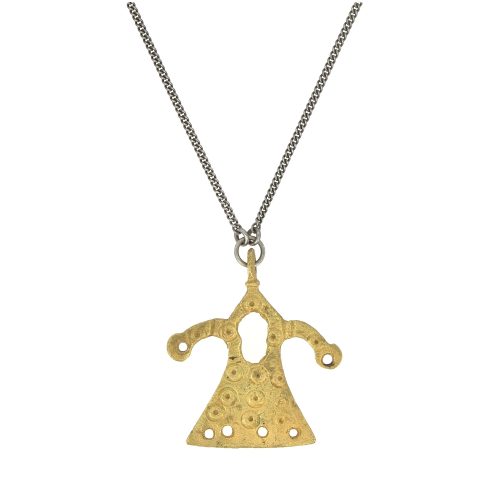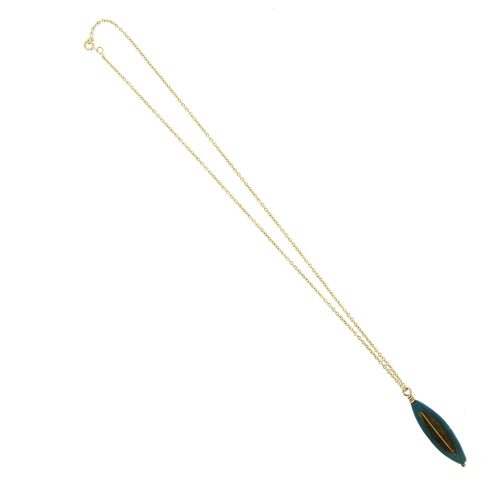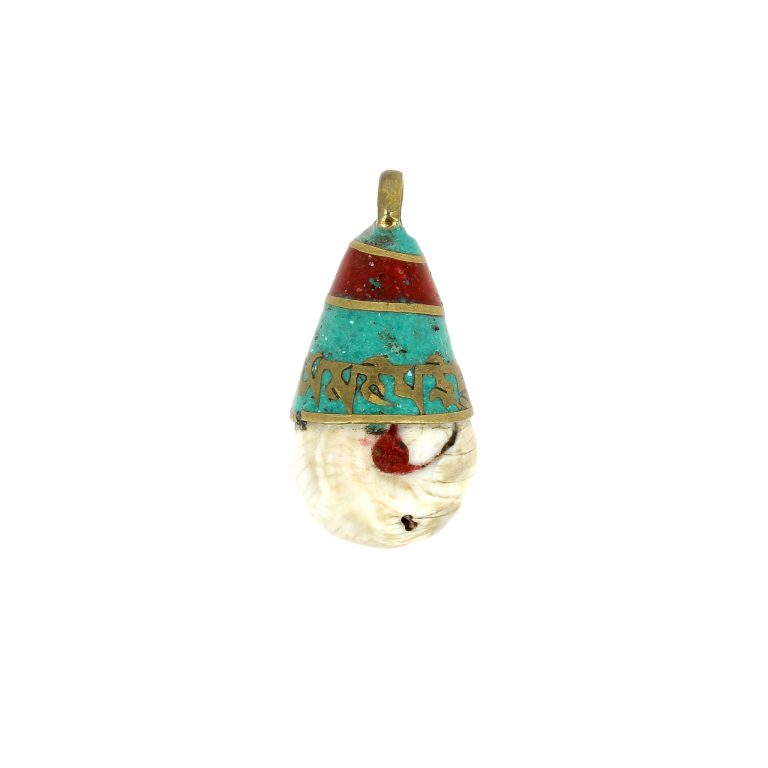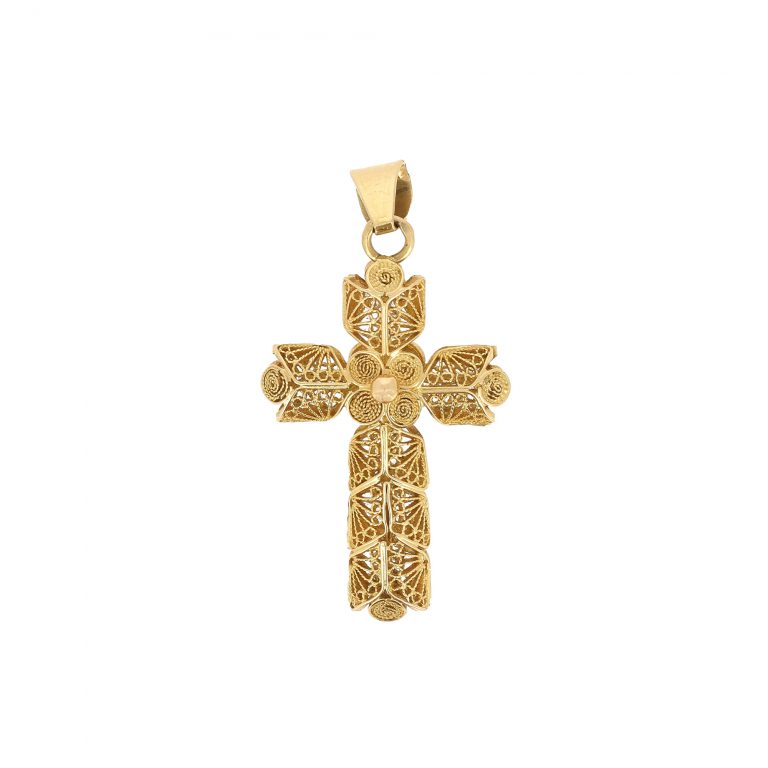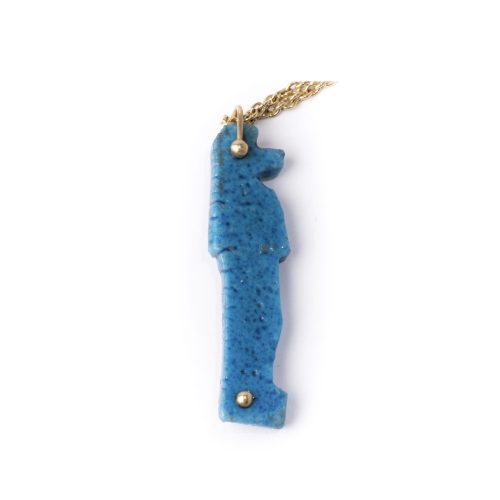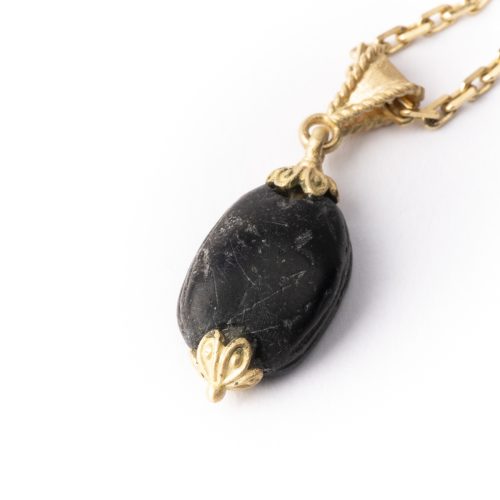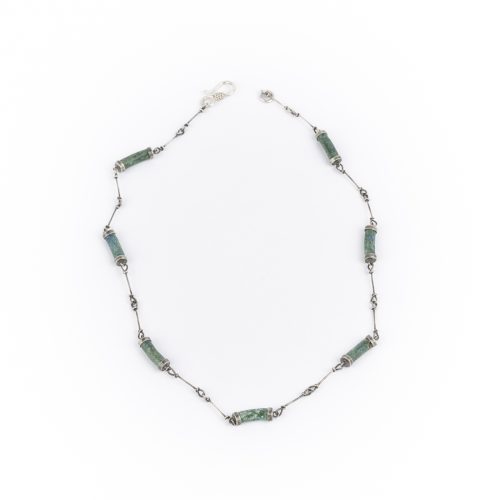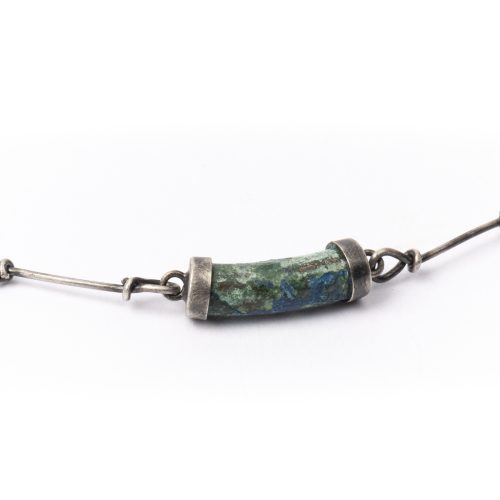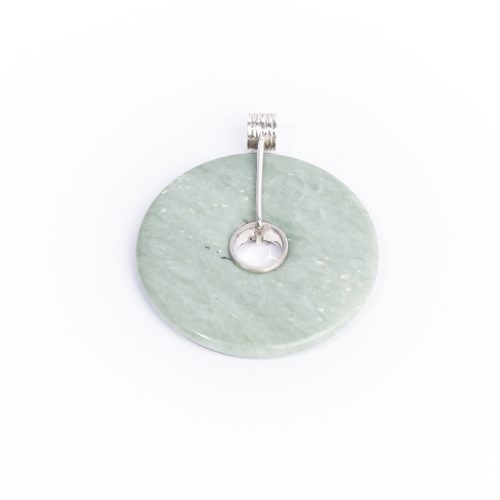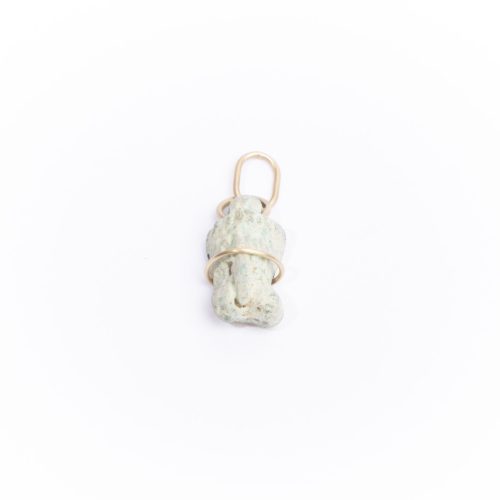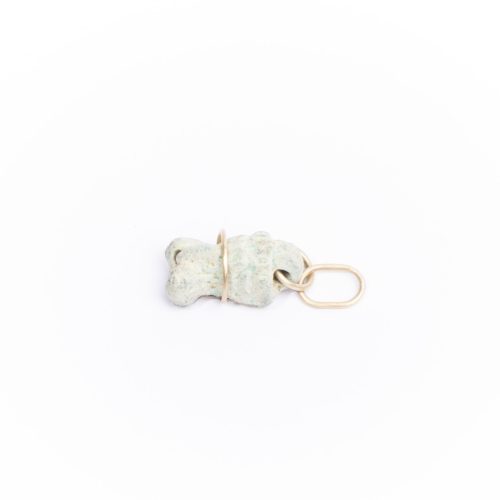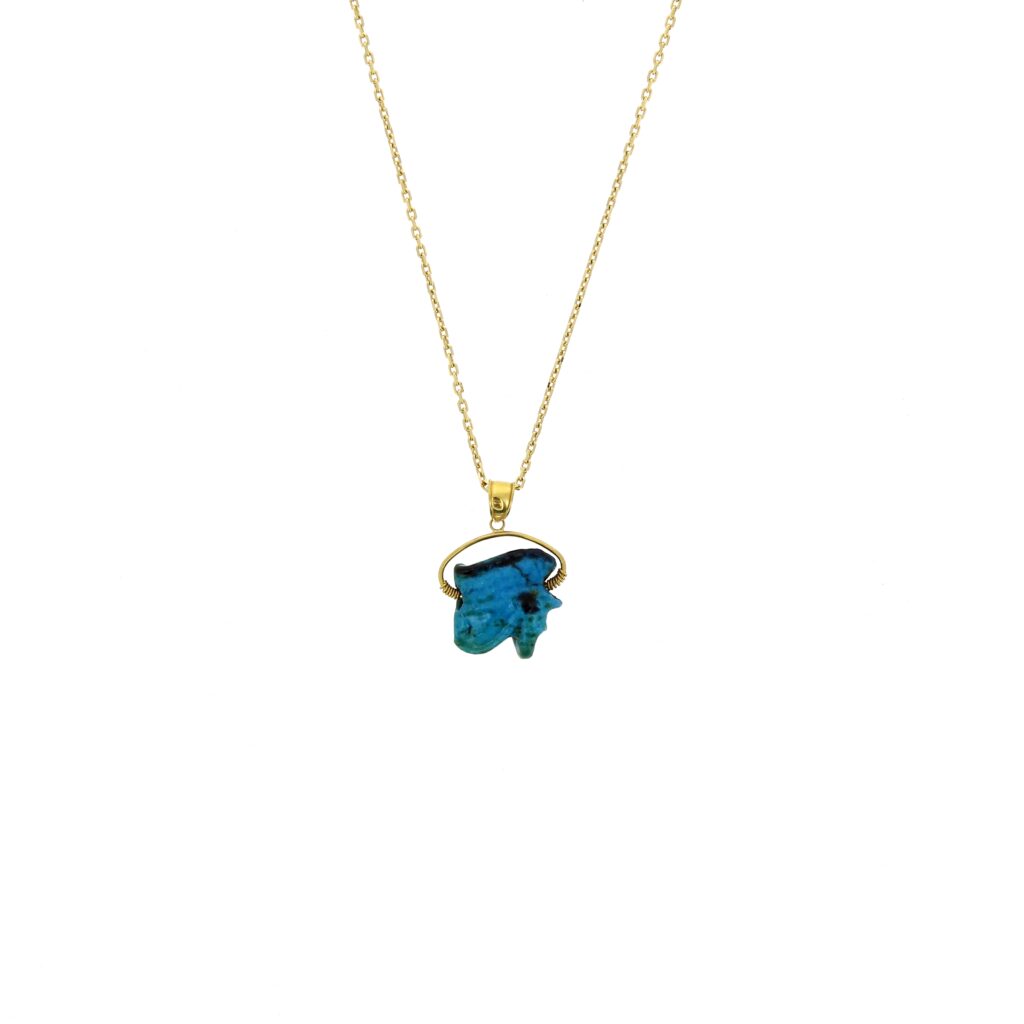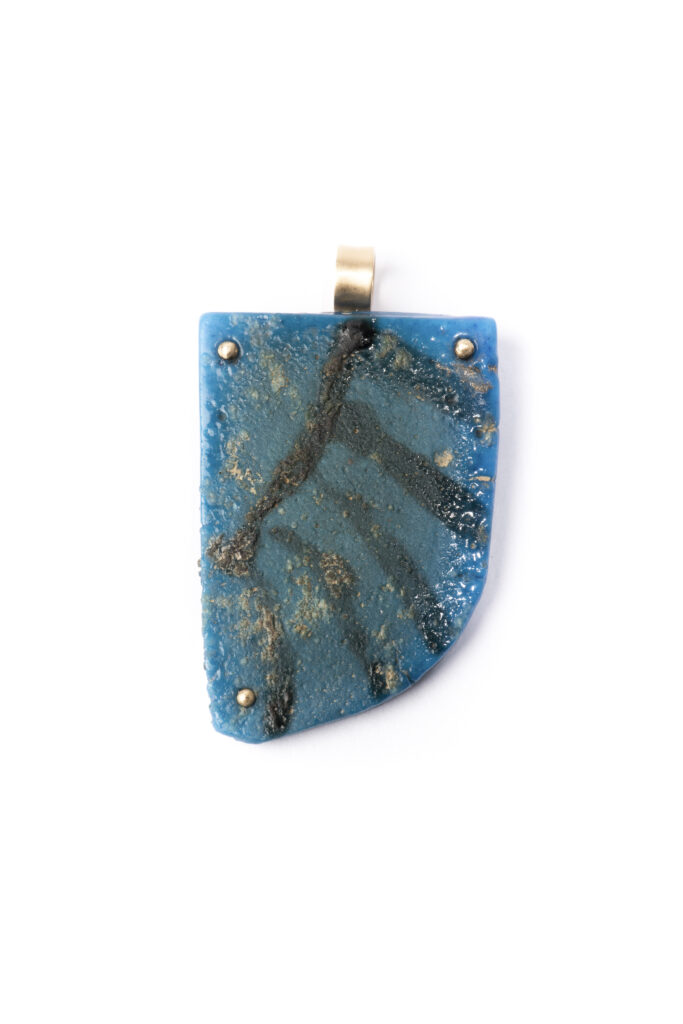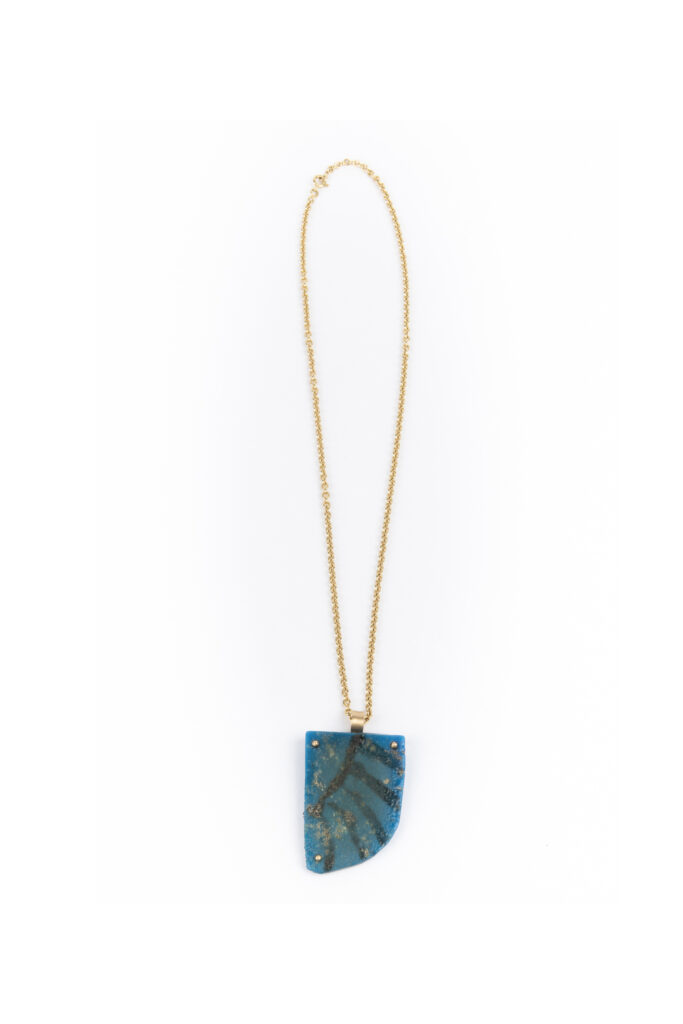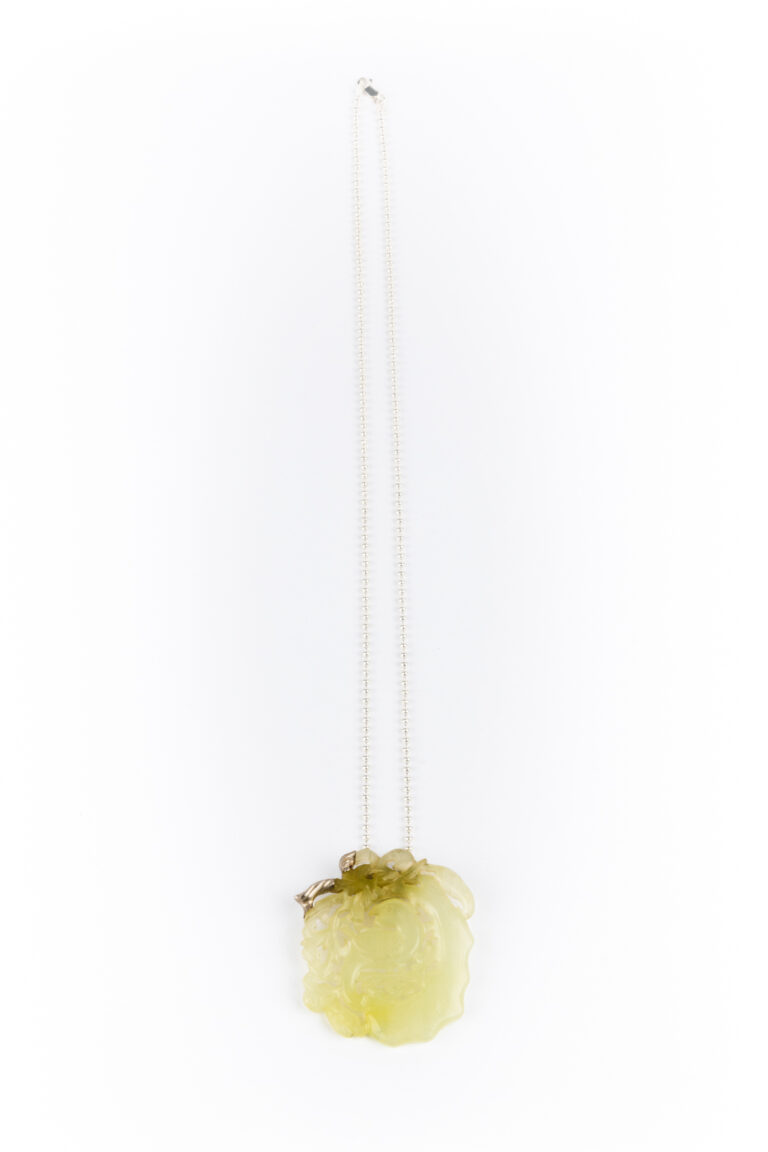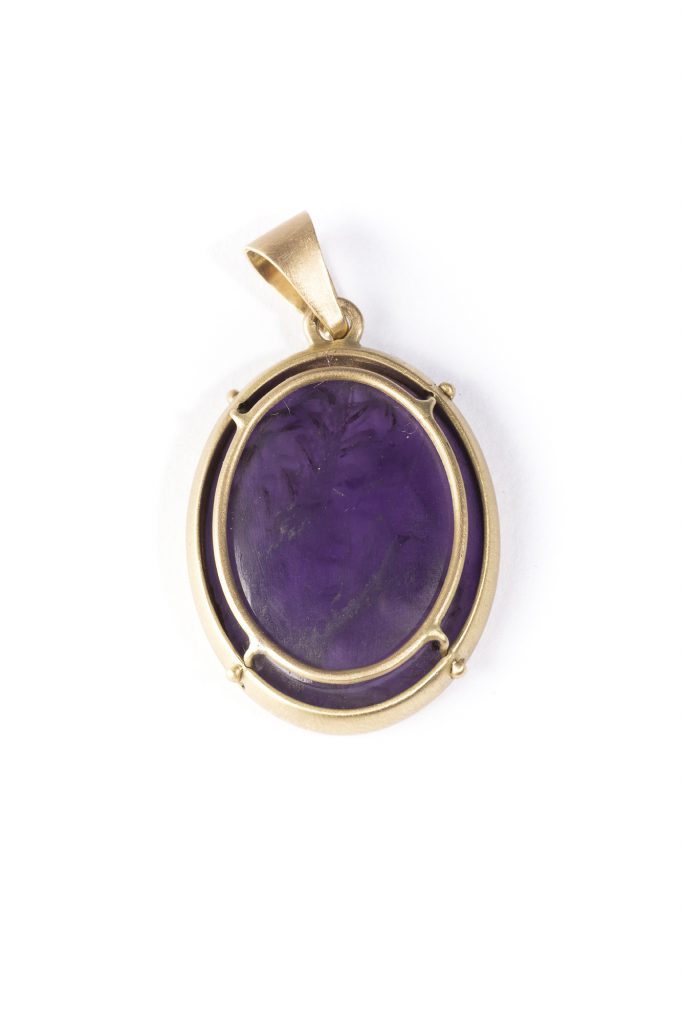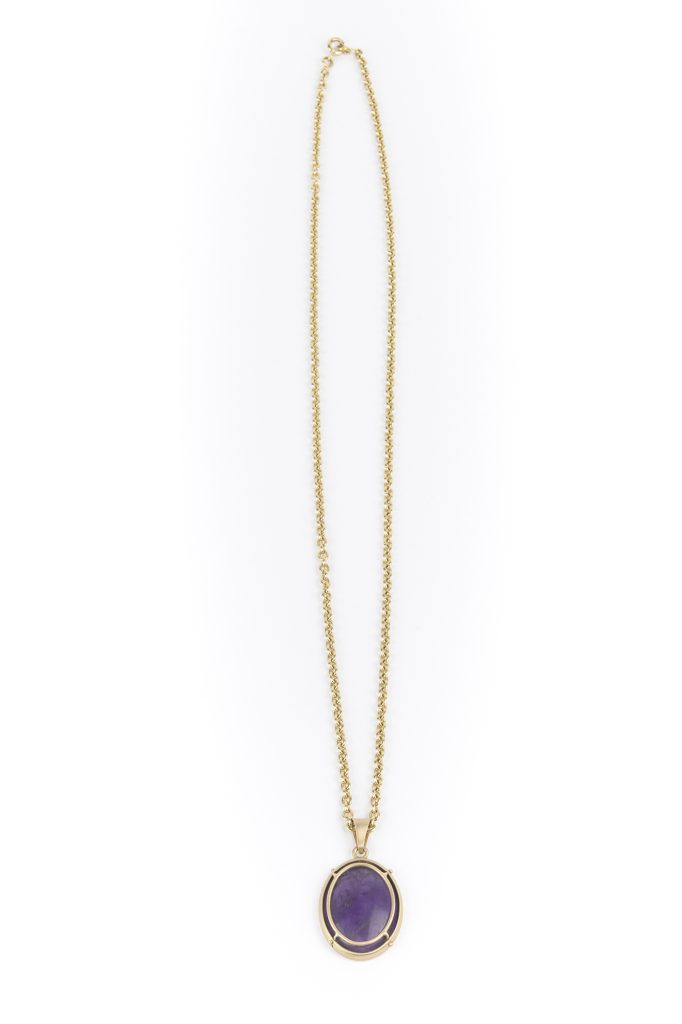Pendants
Antique pendants in Paris – unique and precious creations
Price upon request
Millennial Pendants
Created from amulets, coins, or intaglios from great ancient civilisations, my pendants are unique luxury jewellery pieces.
Each piece is assembled entirely by hand, in keeping with the highest standards of craftsmanship.
Rare and exclusive, these pendants carry within them the memory of ancient times and the timeless elegance of contemporary creations.
Barque solaire
In turquoise-blue glazed faience, crossed by a line of gold.
The solar barque is linked to the cycle of the sun and its god, Ra, creator of the universe. The rising and setting of the sun mirror the cycle of life and death. Ra undertakes this daily and nightly voyage aboard a barque known as Mandjet.
Egypt, 1069–332 BC, Third Intermediate to Late Period.
Thot bleu
Pendant depicting the god Thoth as a baboon, in turquoise faience adorned with two 18K gold beads.
Thoth is the son of Horus and Seth. The birth of the moon is linked to the appearance of the Eye of Horus and the coming into being of the god Thoth.
He acts as arbiter among the gods, protects Isis during her pregnancy, and heals her son Horus. He is depicted as a baboon or an ibis.
Egypt, Late Period, 750–332 BC.
Collier Alexandre
Composed of a silver tetradrachm of Alexander the Great wearing the horn of the god Ammon; on the reverse, Athena, goddess of war and wisdom.
Alexander was born in 356 BC, the son of Philip II, king of Macedon, who was assassinated in 336. At the age of 20, Alexander embarked on a series of conquests, advancing through Asia to the Indus, and triumphing in Anatolia, Lebanon, Egypt, and Persia, founding numerous cities along the way.
His epic journey ended abruptly in Babylon, where he succumbed to a sudden fever in 323 BC, leaving no heir.
Thrace, 306–282 BC.
Scarabée noir
In hardstone, set in 18K gold.
This piece is an amulet — from the Latin amuletum, meaning “a way to protect oneself.” It is an object worn on the body, believed to bring luck or protection.
The most widespread emblem in ancient Egypt was the scarab. Protector of the living, it also symbolized rebirth for the dead.
Egypt, New Kingdom to Roman period.
Collier bronze étrusque
Bronze bracelet elements mounted on a chain with an antique design, in 18K gold.
The mysterious Etruscan civilization, already present in Italy during the Iron Age, profoundly influenced Roman culture. According to the Greek historian Herodotus, the Etruscans were of Anatolian origin.
Rome, 2nd–4th century AD.
Amulette Coeur
Carnelian heart pendant mounted on an 18K gold bail.
This heart-shaped amulet, known as Ib, was regarded by the Egyptians as the most important organ of the human body — the seat of thought and consciousness, the source of emotions and actions, and the vessel of memory that would bear witness before the judges of the afterlife. It was symbolically weighed to determine whether the deceased was worthy of eternity.
Carnelian, representing flame and warmth, was believed to offer protection against divine wrath.
Egypt, New Kingdom to Ptolemaic period, 1550–32 BC.
Ancient Rome, 3rd–1st century BC.
Collier Alexandre
Composed of a silver tetradrachm of Alexander the Great wearing the horn of the god Ammon; on the reverse, Athena, goddess of war and wisdom.
Alexander was born in 356 BC, the son of Philip II, king of Macedon, who was assassinated in 336. At the age of 20, Alexander embarked on a series of conquests, advancing deep into Asia as far as the Indus, conquering Anatolia, Lebanon, Egypt, and Persia, and founding numerous cities along the way.
His extraordinary campaign ended abruptly in Babylon, where he succumbed to a violent fever in 323 BC, leaving no heir.
Thrace, 306–282 BC.
Collier bronze étrusque
Bronze bracelet elements mounted on a chain with an antique design, in silver.
The mysterious Etruscan civilization, already established in Italy during the Iron Age, had a profound influence on Roman culture. According to the Greek historian Herodotus, the Etruscans were of Anatolian origin.
Rome, 2nd–4th century AD.
Amulette Coeur
Carnelian heart pendant mounted on an 18K gold bail.
This heart-shaped amulet, known as Ib, was regarded by the Egyptians as the most important organ of the human body — the seat of thought and consciousness, the source of emotions and actions, and the vessel of memory that would bear witness before the judges of the afterlife. It was symbolically weighed to determine whether the deceased was worthy of eternal life.
Carnelian, representing flame and warmth, was believed to protect against divine wrath.
Egypt, New Kingdom to Ptolemaic period, 1550–32 BC.
Disque Bi
In jade, mounted on a silver line with a bail.
Bi discs are among the earliest ceremonial objects, used to honor the cult of the Sun and the Sky. Their central opening symbolizes the passage to eternal life.
The bi is associated with the celestial — and at times the terrestrial — suggesting that its circular form held symbolic, even esoteric, meaning.
Jade, the most precious stone in Chinese civilization, was regarded as the stone of immortality and associated with the five Confucian virtues: benevolence, loyalty, wisdom, propriety, and righteousness.
China, 1800–600 BC.
Amulette Phallus
In stone, set with a gold wire mount.
In Greek and Roman antiquity, the representation of the phallus was not associated with eroticism but with fertility and protection.
Such objects were often worn as amulets around children’s necks to shield them from illness. They were also placed at the entrances of homes and public buildings to ward off the evil eye.
Greek, Baskanion, Egypt to Ptolemaic period, 700 BC – 1st century AD.
Amulette Oudjat
Depicting the Eye of Horus.
Horus is one of the oldest Egyptian deities, most often represented as a falcon wearing the double crown of the pharaohs, the pschent. His name means “the Distant One,” referring to the bird’s majestic flight. Also called Udjat, meaning “whole” or “complete,” the Eye of Horus symbolizes restoration and protection.
Horus embodies pharaonic monarchy — the divine protector and dynastic god.
In vitrified lapis lazuli, mounted on an 18K gold chain.
Egypt, circa 500 BC.

